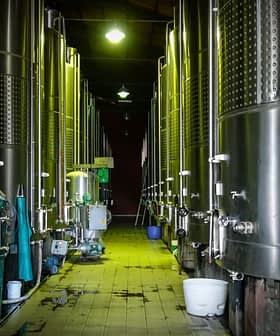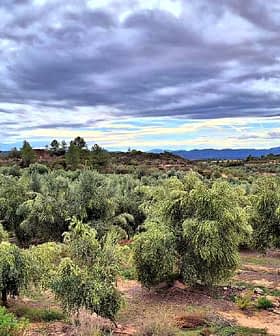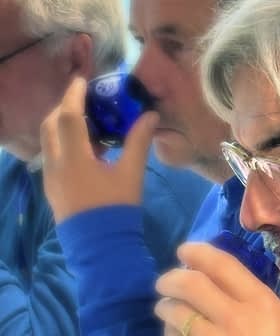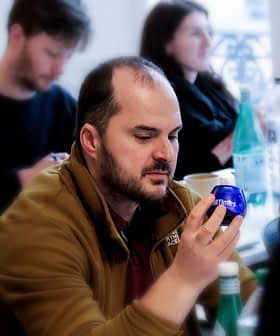Change the Olive Oil Tasting Glass? Some See Red
A glassware designer and the University of Jaén think they've found a better vessel for olive oil sensory analysis.
The International Olive Council established a standard cobalt blue tasting glass for olive oil in 2007, but now a new red-hued glass is being proposed by a designer and the University of Jaén to better conceal the various shades of yellow in olive oil samples, although some experts are skeptical of the psychological impact of the color red on perception and performance. Despite the debate over the optimal color of tasting glasses, it is clear that entrepreneurs will continue to see opportunities for innovation in the olive oil industry.
To conduct a sensory evaluation of an olive oil sample, an analyst will smell it, then taste it, but one should never consider the color of the oil, which has no bearing on its quality and should not be a factor when determining its organoleptic characteristics.
It is time to present new tools such as a new glass of professional tasting that responds to the 21st century.
For that reason, in 2007, the International Olive Council established a tasting glass standard in cobalt blue, which has been dutifully followed by tasting panels around the world ever since.
Now, a glassware designer and the University of Jaén think they’ve found a better vessel and they envision a sea of red.
“Until now the classic color of the professional cup was a blue color, however, we have determined that this is not a suitable color for the purpose the standard describes. The optimal color for this is the one that we present that has reddish tones,” said José Juan Gaforio, head of the Center for Advanced Studies in Olive Oil and Olives and professor of the Immunology Area of the University of Jaén.
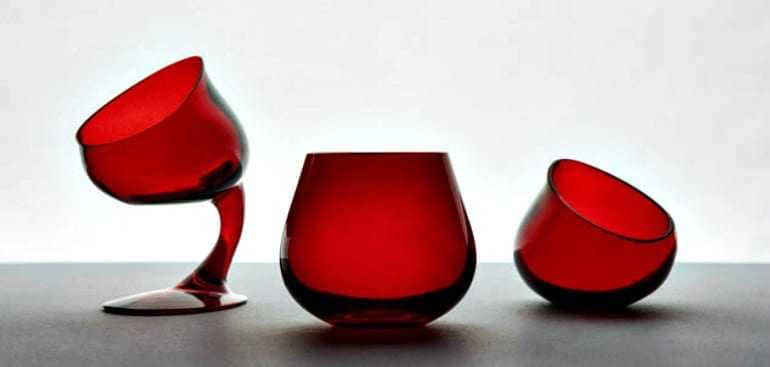
“We are in a historic moment,” declared Daniel Millán of Elaia Zait, the glassware maker. “It is time to present new tools such as a new glass of professional tasting that responds to the 21st century,” he told a gathering at Expoliva 2017.
To back up their claim, the team demonstrated that red hues are more effective at concealing the oils’ various shades of yellow.

While it might be true that red better suppresses yellow and green hues, the color red has also been found to hinder motivation and the ability to think, and trigger strong, often negative psychological responses, noted Olive Oil Times publisher Curtis Cord in a tweeted response to the creators of the new glass.
Cord, who keeps a regular stock of hundreds of tasting glasses for the New York International Olive Oil Competition and educational programs he leads, said he wouldn’t mind switching to a new utensil if it was found to be better, but he is not convinced.
“What’s worse: a pleasing blue vessel that not entirely conceals the color of an oil sample, or a glass that’s red — nature’s cue for danger, the symbolic color of warning signs and poison labels?” Cord asked.
“Red is perhaps the most manipulative color, influencing everything from your behavior in the workplace to your love life,” the BBC’s David Robinson wrote in an article that underscored the power of red to influence how we perceive things.
Andrew Elliot at the University of Rochester in New York found that “people performed worse on cognitive tests if they were given to the participant in a red cover slip,” the BBC reported.
And, as Juliet Zhu, a University of British Columbia psychologist noted, “Think about red, and what comes to mind: stop lights, stop signs, danger, ambulances. Blue is the color of the sky, the ocean, safety. When their environment is safe, people are more explorative.”
One thing is clear, whether you’re in a red or blue state of mind in terms of your olive oil tasting glass choice, there will be entrepreneurs who see, mostly, green.



